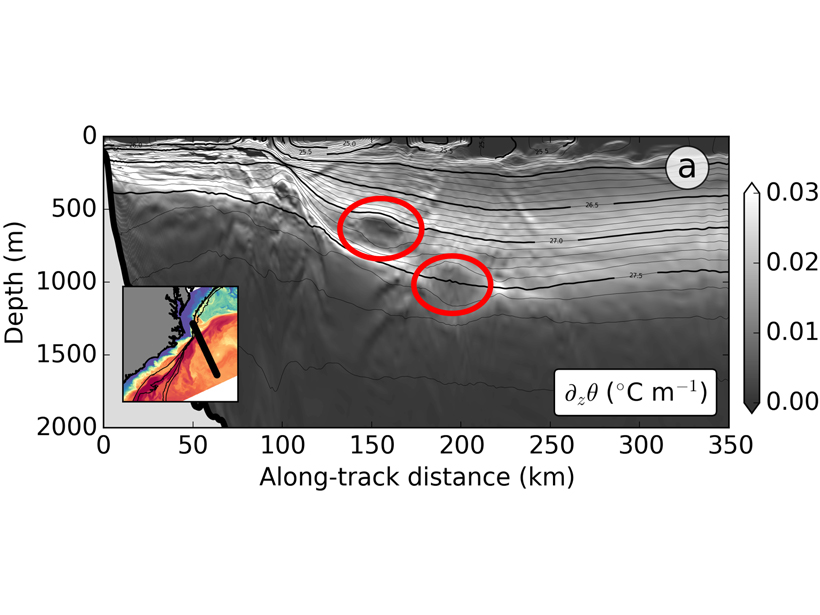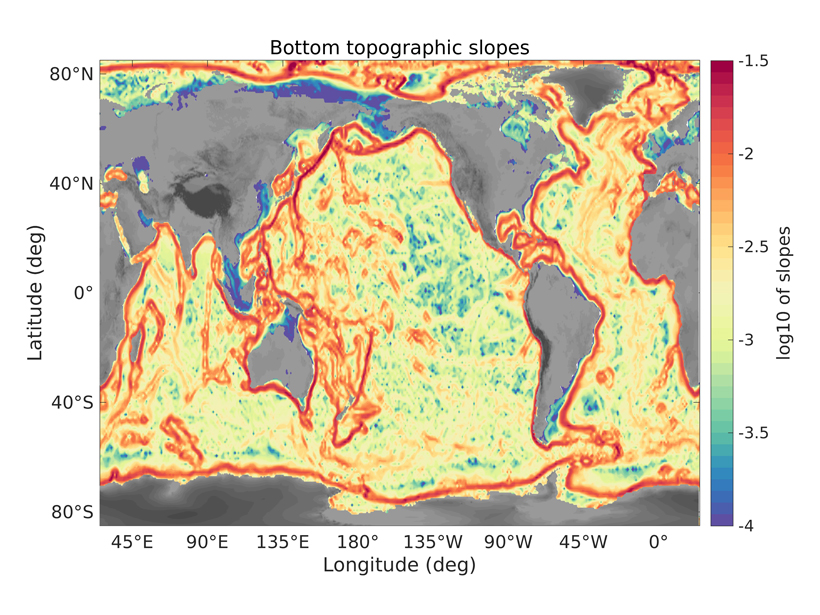Turbidity currents move suspended sediment into the ocean. In general, the more sediment, the stronger the turbidity current, but one process may generate turbidity currents from very dilute rivers.
A. M. Hogg
Editor, Geophysical Research Letters
Posted inEditors' Highlights
Wrinkles and Bumps in the Gulf Stream
Observations of tiny vortices in the ocean interior provide hints of a dynamic richness of the deep ocean that we are yet to fully appreciate.
Posted inEditors' Highlights
Sloping Topography and Oceanic Surface Modes
An accurate understanding of the influence of ocean bottom topography helps to diagnose the velocities of subsurface currents.



